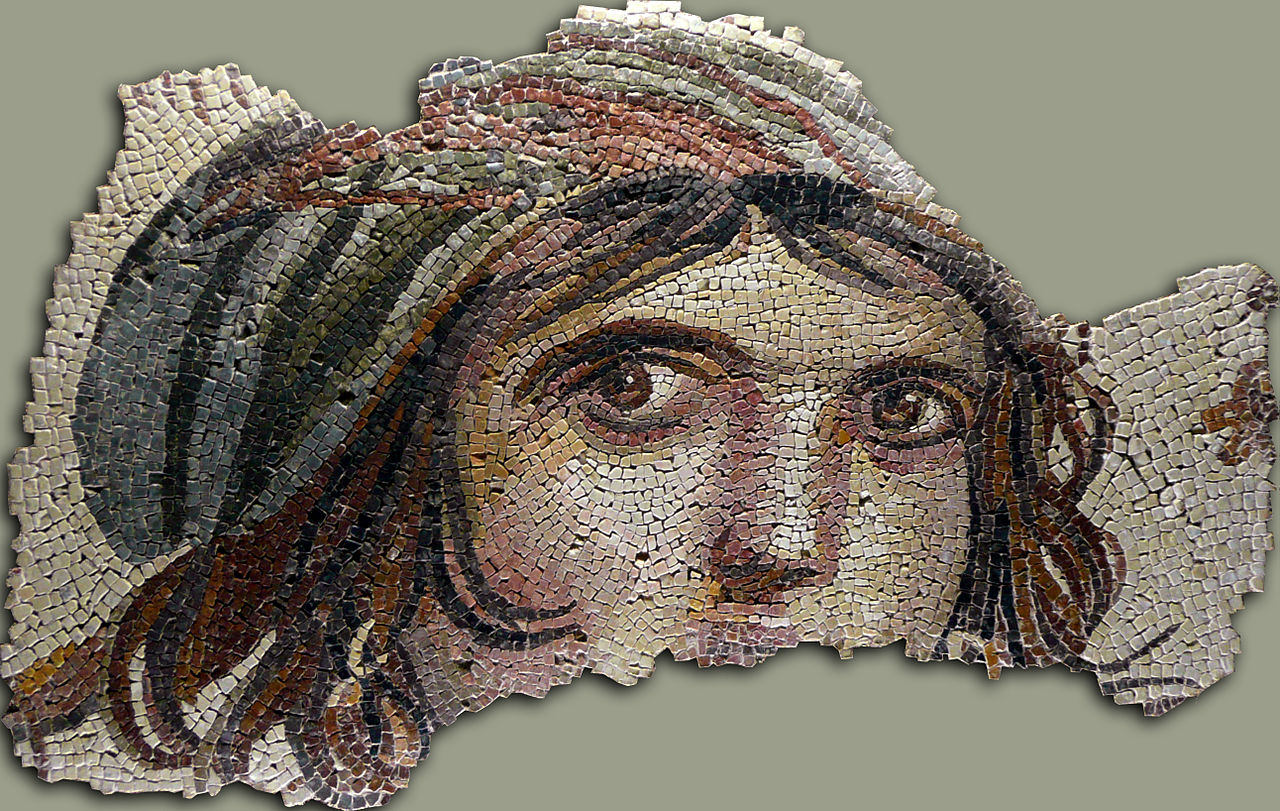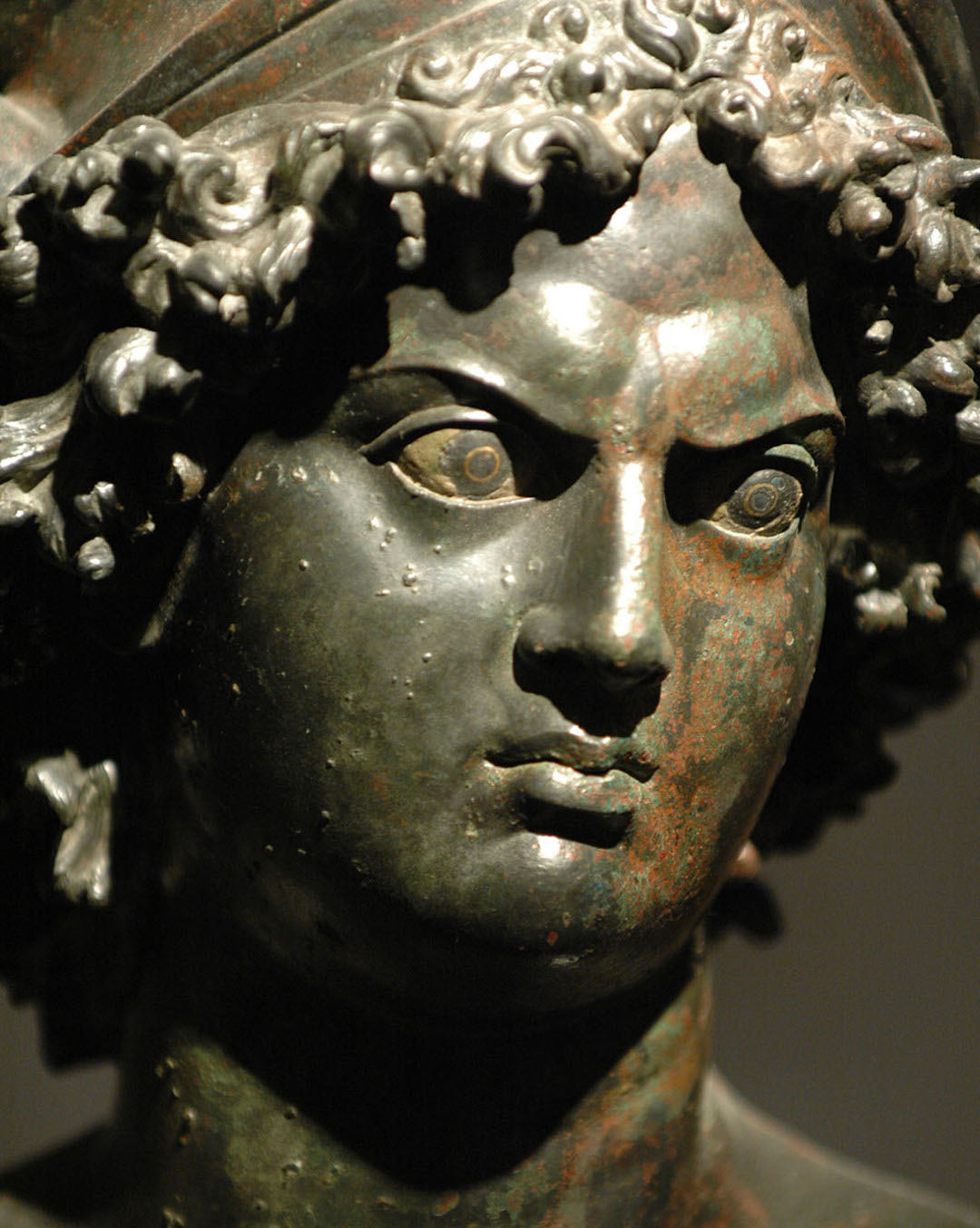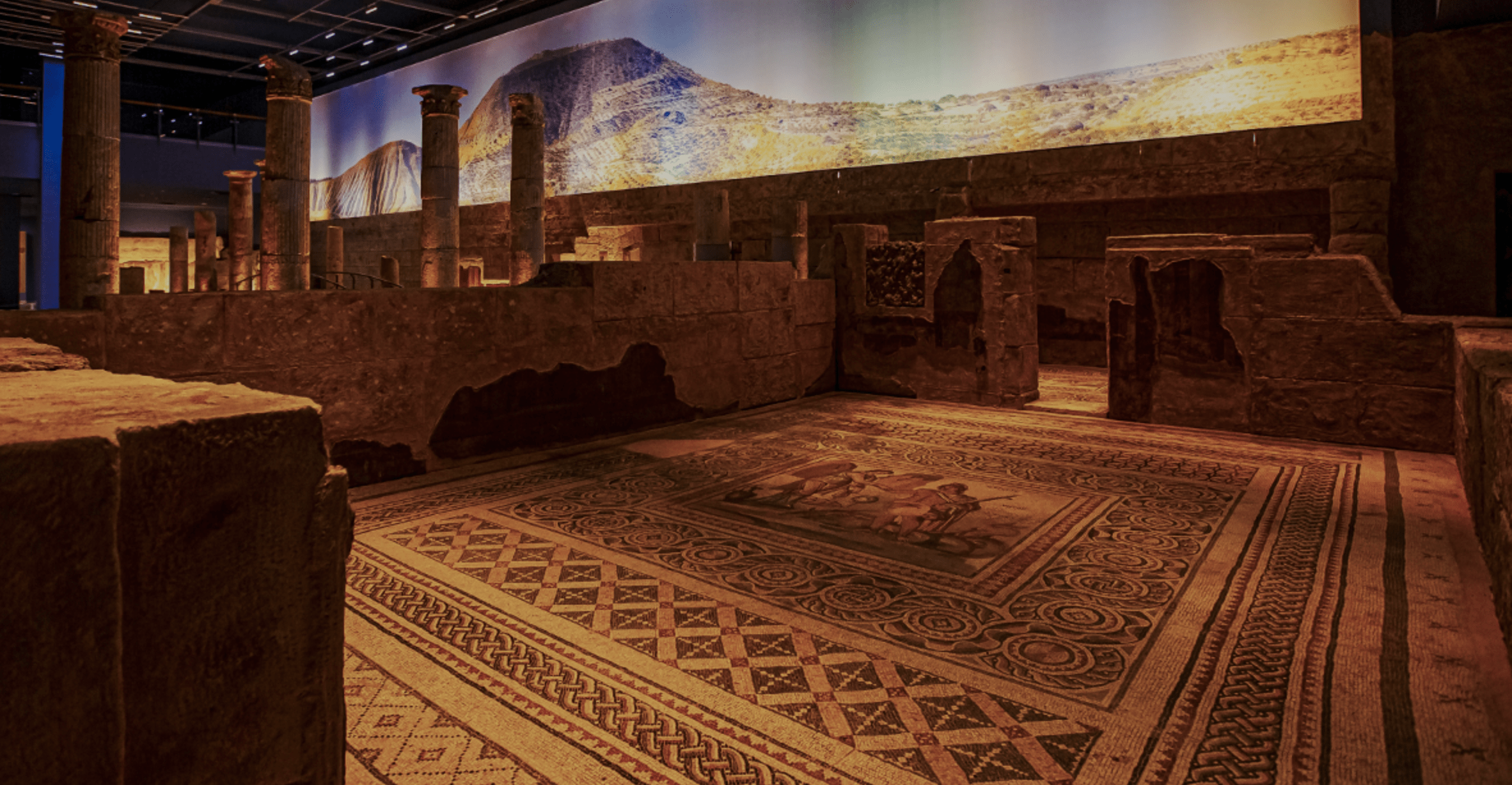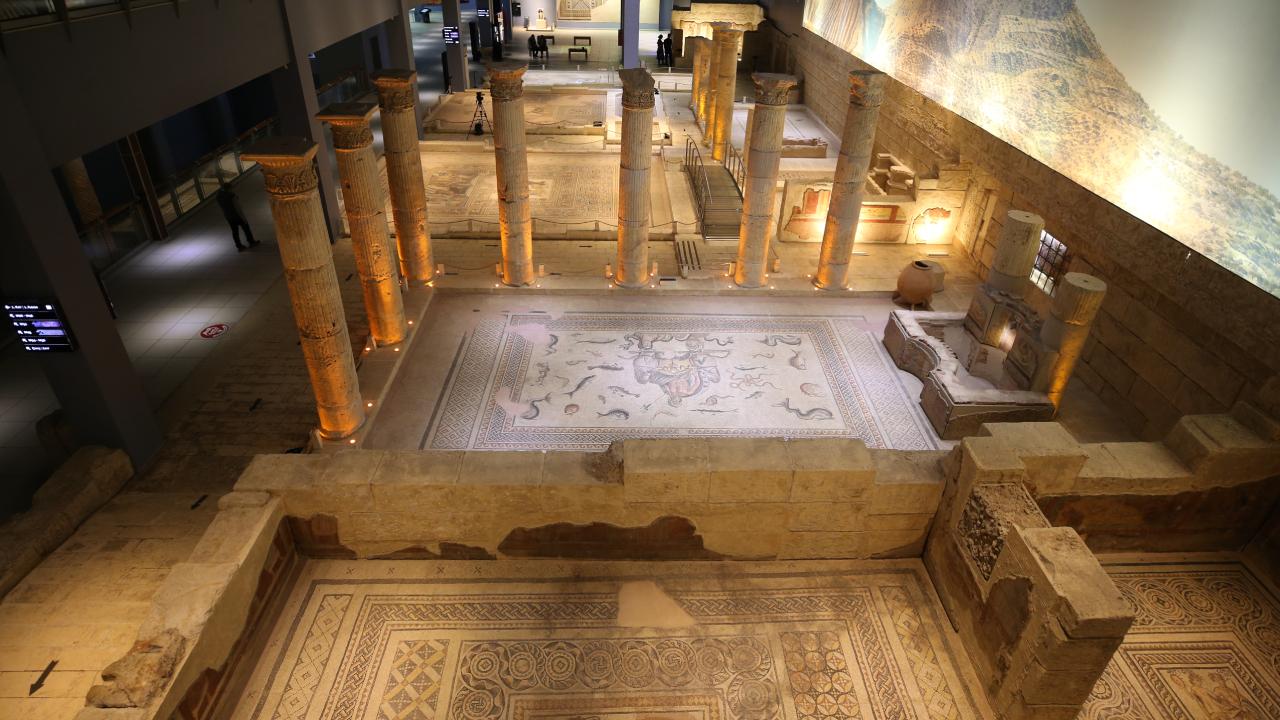Have you ever imagined stepping back in time and walking through the villa of a wealthy Roman merchant or a legionary commander on the banks of the Euphrates? If you find yourself in Gaziantep, turning this dream into reality is much easier than you think. This is a city that will dazzle you not only with its flavors but also with its history that takes you back thousands of years. The gateway to this time travel is undoubtedly the Zeugma Mosaic Museum! If you're wondering about the Things to Do in the Zeugma Mosaic Museum, you've come to the right place. This museum is not just a collection of stone and marble fragments; it is the breathtaking story of a civilization saved at the last moment from being submerged underwater. Every artifact, unearthed in a race against time just before the waters of the Birecik Dam rose, is a survivor. That's why visiting Zeugma is much more than touring an exhibition; it's witnessing a story of salvation.
Witness the mysterious gaze of the world-famous Gypsy Girl mosaic
A captivating atmosphere greets you from the moment you step into the museum, but nothing can prepare you for the moment you meet the Gypsy Girl. You'll feel your excitement build as you proceed into a dimly lit, labyrinth-like room specially designed for the museum's most precious treasure. And there she is, right in front of you... those misty, mysterious, and somewhat melancholic eyes that have followed viewers for centuries. Known as the Mona Lisa of Zeugma, the story of this masterpiece is as impressive as the work itself.
This unique artifact was discovered by chance in 1998 during rescue excavations, under a fallen column on the floor of a villa's dining room. Perhaps it was that very column that saved it from being plundered by treasure hunters. Although she was named the Gypsy Girl because of her braided hair, large eyes, and earrings, her identity remains a mystery. To some, she is Mother Earth, Gaia; to others, Alexander the Great, or a maenad, a follower of the Wine God Dionysus. Thanks to the artist's special technique, her eyes follow you no matter which angle you look from.
The most poignant part of the story is her missing pieces. It was discovered that 12 pieces, smuggled abroad by traffickers in the 1960s, were being used for decoration at a university in the United States years later. As a result of the intense efforts of the Ministry of Culture and Tourism, these pieces were returned to their homeland, to their home. Now displayed right next to the Gypsy Girl, these fragments not only complete a mosaic but also stand as a symbol of a victory won for the preservation of cultural heritage.

See the splendor of the 'Statue of Mars' (Ares) up close
After the delicate craftsmanship and emotional depth of the Gypsy Girl, the museum introduces you to a completely different power: the statue of the God of War, Mars (Ares in Greek mythology). This 1.5-meter bronze statue, placed on a column nearly 7 meters high, is positioned to be visible from every floor of the museum, as if it has taken on the role of protecting all these ancient treasures. With its furious gaze, ready-for-battle stance, and incredible detail, it possesses an astonishing realism.
What makes the statue of Mars so special is not just its artistic value, but also the historical traces it carries. This statue was found in 2000 in a section of the Poseidon Villa used as a pantry, hidden under food jars. This indicates that when the Sassanian army attacked the city in 256 AD, the villa's owners tried to protect their most valuable possessions in the hope of one day returning. The burn mark on the statue is a tangible memory from that terrible day of invasion. When you look at that mark, you feel as if you are touching the tragedy of a city's final days.
However, Mars was not just a destructive god of war for Zeugma. He was also a symbol of spring, abundance, and power in the fertile lands of the Euphrates. Fine details, like its eyes made of gold and silver, are proof of how valuable the statue was. This statue is a silent witness that combines both the strength and the tragic end of a city in a single form.

Walk on the unique mosaics that adorned the floors of Roman villas
The true power of the Zeugma Mosaic Museum lies, as its name suggests, in its vast collection of mosaics. The incredible works of art you see once formed the floors of wealthy Romans' villas—what we would call flooring today. Imagine the feasts of that era, where noble guests would dine reclining on couches called kline. These mosaics were the stages upon which those banquets, philosophical conversations, and theatrical plays took place. Life in these villas shows the wealth of the Roman Empire in the east and tells so much about Gaziantep's deep-rooted history.
Villa owners not only beautified their homes with the mythological scenes they chose but also showcased their intellectual accumulation, cultural level, and social status to their guests. In other words, these mosaics were like the social media posts of their time. A few masterpieces you will encounter while walking through the museum will surely fascinate you:
Okeanos and Tethys Mosaic: Belonging to the floor of a shallow pool in a villa, this mosaic depicts the ocean god Okeanos and his wife Tethys surrounded by sea creatures. Its most impressive feature is the illusion of movement created by the wave motifs and fish figures when the pool was filled with water.
The Abduction of Europa Mosaic: It portrays the famous moment when Zeus, the king of the gods, transforms into a white bull to abduct the beautiful princess Europa. The astonishment on Europa's face and the power of the bull are depicted with incredible vitality through thousands of tiny stone pieces.
Achilles Mosaic: It shows the moment when the legendary hero of the Trojan War, Achilles, who was hiding on an island disguised as a woman to avoid going to war, has his identity revealed by the cunning Odysseus. This mosaic is one of the finest examples of how advanced storytelling was in Roman art.
All these works were made by assembling hundreds of thousands of tiny, colorful stone and glass cubes called tesserae. The ability to create such realistic and vibrant scenes with such small pieces leaves one in awe of the talent of the Zeugma masters.

While You're Here, Explore Antep
If you still have energy after leaving the magical atmosphere of the Zeugma Mosaic Museum, Gaziantep has much more to offer. How about following the traces of history you saw in the museum through the city's streets?
Gaziantep Castle: You can climb this magnificent castle in the heart of the city to enjoy a panoramic view and visit the Gaziantep Defense and Heroism Panoramic Museum.
Coppersmiths' Bazaar: In this historic bazaar where the sounds of hammers turn into a rhythmic melody, you can see how centuries-old handicrafts are still alive and buy wonderful souvenirs.
Emine Göğüş Culinary Museum: An excellent stop to learn about the history and richness of Gaziantep's culinary culture, which has been recognized by UNESCO.
To fully experience the spirit of Antep, don't forget to check out our list of other places to visit in Gaziantep.
Frequently Asked Questions (FAQ)
What is the entrance fee and what are the visiting hours for the Zeugma Mosaic Museum? Museum entrance fees and visiting hours may vary depending on the season. It is generally open from 08:30-19:00 during the summer period (April 1 - October 31) and from 08:30-17:30 during the winter period. However, for the most current and accurate information, we recommend checking the museum's official website or the Ministry of Culture and Tourism's page before you go.
Is the Museum Card valid at the museum? Yes, the Museum Card is valid at the Zeugma Mosaic Museum. If you have a Museum Card, you do not need to pay a separate entrance fee.
How long does it take to fully explore the museum? To do the museum justice, you should set aside at least 2-3 hours. If you have a special interest in history and art, you can easily extend this time to half a day by listening to the story of each mosaic and examining its details.
Sources
For more detailed information and current announcements, you can visit the official Zeugma page of the Republic of Turkey Ministry of Culture and Tourism: official Zeugma page.


 English
English Türkçe
Türkçe